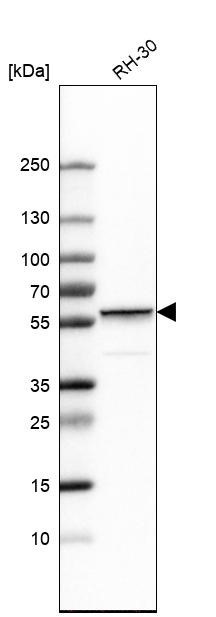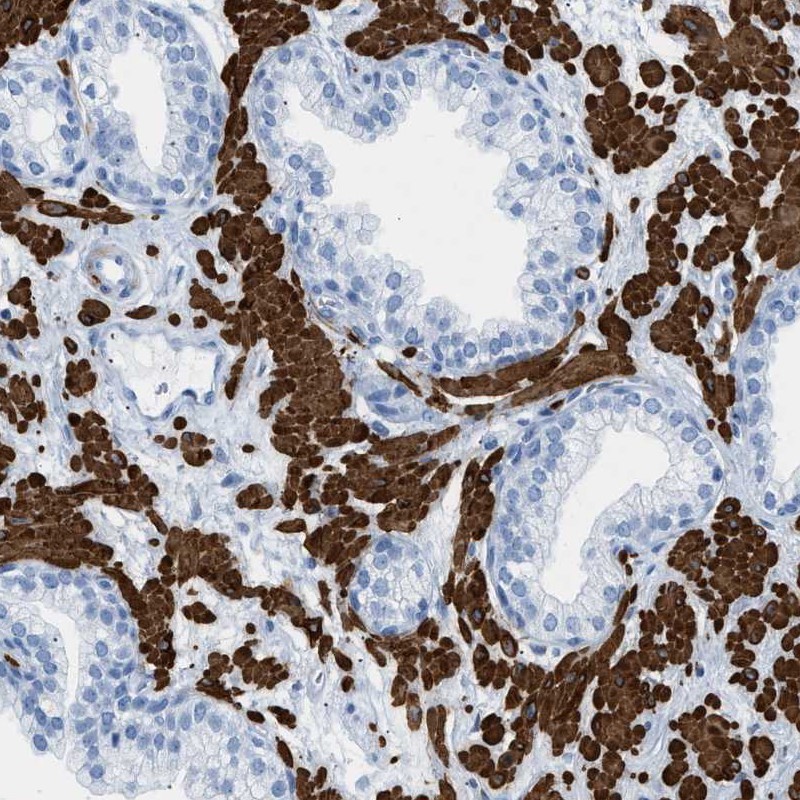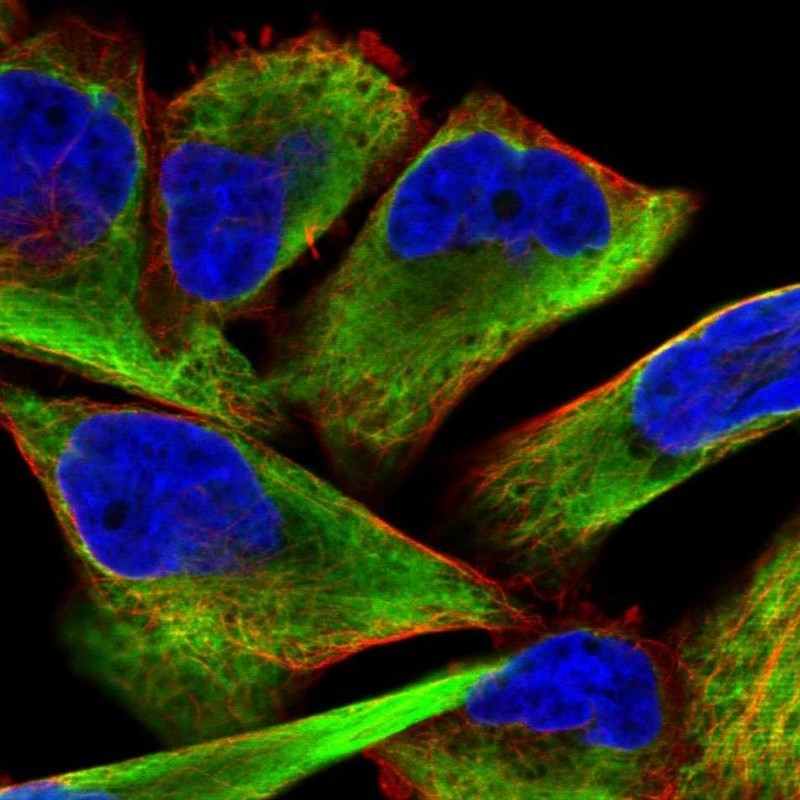Background:
The cytoskeleton consists of three types of cytosolic fibers: microfilaments (actin filaments), intermediate filaments and microtubules. Major types of intermediate filaments are distinguished and expressed in particular cell types: cytokeratins (epithelial cells), glial fibrillary acidic protein or GFAP (glial cells), desmin (skeletal, visceral and certain vascular smooth muscle cells), vimentin (mesenchyme origin) and neurofilaments (neurons). GFAP and vimentin form intermediate filaments in astroglial cells and modulate their motility and shape. In particular, vimentin filaments are present at early developmental stages, while GFAP filaments are characteristic of differentiated and mature brain astrocytes. Thus, GFAP is commonly used as a marker for intracranial and intraspinal tumors arising from astrocytes. Vimentin is present in sarcomas, but not carcinomas, and its expression is examined relative to other markers to distinguish between the two forms of neoplasm. Desmin is a myogenic marker expressed in early development that forms a network of filaments that extends across the myofibril and surrounds Z discs. The desmin cytoskeleton provides a connection among myofibrils, organelles and the cytoskeleton. Desmin knockout mice develop cardiomyopathy, skeletal and smooth muscle defects. In humans, desmin related myopathies might be caused by mutations in the corresponding desmin gene or in proteins with which desmin interacts, including αB-crystallin and synemin. Disorganized desmin filaments and the accumulation of protein aggregates comprised predominantly of desmin characterize desmin-related myopathies.
UniProt ID: P17661


